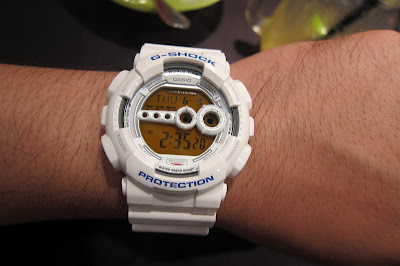Recently I had the opportunity (and permission) to change the battery and strap for a friend's cK Bold Chronograph watch. It was a chance for me to practise my amateur hobby watchmaking...ermm.... yeah... Regardless he was happy for me to do it, so here we go.
First up, the watch. CK licenced the watchmaking side of the business to the Swatchgroup, meaning they benefit from their might and expertise. I quite like CK watches- I love their minimalistic design. Simple, modern lines and elegant style. For a fashion watch brand their design is quite timeless. Case quality is top notch (for the price), as you would expect from something stamped "Swiss Made". The straps, on the other hand... we'll get to that later...
Second, the movement. This watch is equipped with an ETA G10.211 quartz chronograph movement. This is one of the most widely used quartz chrono in the industry. If you have a quartz chronograph, with this particular subdial layout, chances are G10.211 is ticking away inside.
Now one thing about this particular movement is that they're designed to be replaced, and not serviced. (Like most things these days.) As you can see from the image below- the movement is completely sealed, with just the place for the battery showing. Even at the service centres, the movements are replaced rather than serviced. This reduces the service lead time, and makes things easier for all involved. So simple, in fact, if you have the tools, you could almost replace the movement yourself... (just keep in mind that it ain't easy taking those tiny chronograph hands off...)
Third, the strap. This is one issue I have with CK watches. Their straps are CRAP! Seems to be made of calf with a rubber backing and just glued together. They fall apart easily and once they're just a little bit worn, they start to look really shoddy. Does the gorgeous watch no favours whatsoever. My friend wanted something a bit more colourful so this is what it looks like now. Gives the watch a completely new look and a new lease of life.
[o]




















